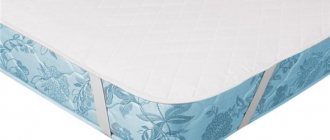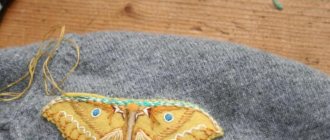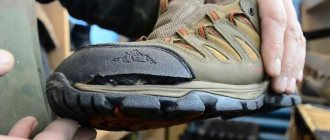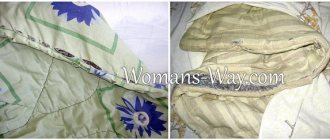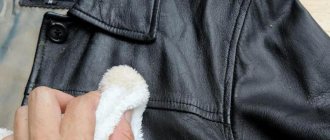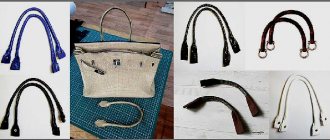How to work with different fabrics
Before looking for specific recommendations on how to sew a T-shirt or other item, you should take a close look at the fabric from which it is made. Working with each material has its own specifics. Depending on the type of fabric, a suitable needle, thread and even the size of scissors are selected.
If the T-shirt does not fit, it can be adjusted to the desired size
Thus, for sewing thin fabrics, thin threads and small needles are used. The color of the thread must match the basic tone of the material.
When choosing scissors, the property of the material, such as the degree of cutting resistance, is taken into account. For materials such as linen, cotton, synthetics it is large, for woolen fabrics it is small.
If the selected fabric is prone to shrinkage, before you start cutting it, the cut (or the finished product to be altered) should first be subjected to wet heat treatment (WHT).
Knitted fabric requires a special approach when sewing
For loose fabrics (for example, silk), it is necessary to provide for more significant seam allowances and prepare an overlocker in advance - experts recommend in this case processing the edges before starting to baste the product.
Fabrics that are slippery or prone to deformation must be cut and recut with the utmost care and with very sharp scissors. It is most convenient to attach them to a cardboard template before starting work.
Limit of shrinkage of things
If you need to make something smaller, you should take into account the composition of the fabric and the model of the product.
In most cases, the product shrinks in all directions , becoming not only, for example, narrower, but also shorter. Proper tailoring of things is also important, when the threads of the material have the appropriate weave.
Reducing products by one size or two can be achieved quite simply. But if you need to make an item smaller by more than 2 sizes, not every method will work, and this can not be done with all wardrobe items.
The easiest way to plant is cotton fabric . It reacts quite quickly and actively to high temperatures. When immersed in boiling water for just 5 minutes, the item of clothing may shrink down to size.
Keeping in boiling water for a quarter of an hour allows the item to shrink 2-3 sizes. But this method is only suitable for white cotton. When exposed to intense heat, colored cotton may fade and lose the brightness of its colors.
It is almost impossible to reduce an item by more than 2-3 sizes by washing without losing its appearance and style.
Self-stitching
Any item of clothing can be worn with pleasure only if it fits well. T-shirts are no exception to the rule. Therefore, if the purchased summer wardrobe item has too wide shoulders, inappropriate length or a narrow collar, you should try to alter the item yourself. If you have minimal sewing experience, there should not be any particular difficulties in deciding how to hem a T-shirt on a sewing machine.
A T-shirt that doesn't fit is not a problem
Important! The item to be altered must be clean and ironed.
You might be interested in Sewing short skirts with and without patterns
Neck
The sewn-on neckline on knitted T-shirts tends to stretch during wear. The neckline becomes too large and fits poorly. There are many ways to stitch the neckline of a T-shirt. The simplest of them involves doing the following:
- Prepare pins, a hand knitting needle (with a blunt tip) or a sewing machine.
- Turn the product inside out.
- Turn the edge of the collar over to the wrong side and carefully pin it with pins.
- Sew the trim by hand or sew on with a sewing machine. It is important that the stitching is elastic.
It is not difficult to bring a stretched neck of a T-shirt back to normal.
There is another scheme, it involves tearing off the neck and re-sewing it. But it’s worth giving a step-by-step master class of this process:
- Peel off the collar trim from the T-shirt.
- Open any shoulder seam by about 2 cm.
- Iron all parts of the product.
- Cut the seam from the finishing strip.
- Unfold and iron the strip again, stretching it at the same time.
- Finish one of the long edges of the plank with an overlocker.
- Place the placket and T-shirt with right sides facing each other.
- Baste so that the neck line and the raw edge of the placket coincide.
- Cut off the excess part of the plank.
- Sew the bar.
- Turn the stitched strip to the wrong side and baste.
- Attach the placket and stitch side by side at a distance of 0.5 cm.
- Sew up and finish the ripped section of the shoulder seam.
You should use the method of tearing off the neck only if you have enough sewing experience.
Home conditions do not always allow you to use this method, since not everyone has an overlocker.
On the sides
It often happens that you buy or receive as a gift a T-shirt that is larger than you need. Don't rush to turn it into a spacious home outfit. After all, sewing a T-shirt one size smaller on your own won’t be difficult at all.
It’s easy to sew the sides of a T-shirt
It’s ideal if you have a cover stitcher and an overlocker, but if you don’t have them, any modern machine that has an overlock stitch will do. Next, the algorithm of actions to reduce the product on the sides will be as follows:
- During the fitting process, mark the locations of future seams - each side, from below and to the armhole line.
- Without ripping the seams, cut off the overlock stitch both on the sides and in the armhole.
- Mark the line of the future seam with chalk (it is better to use a pattern).
- Fold the T-shirt in half lengthwise, align the cuts and pin everything together (the left and right sides should be identical).
- Mark the new armhole line with chalk.
- Do not remove the pins, but use them to pin together the back, front and armhole.
- Fold the product along the shoulder seams and pin together.
- Cut off all excess, leaving a seam allowance of 0.7 cm.
- Fold the sleeves together, making sure to pinch the bottom.
- Mark the highest point on the rim line with chalk.
- Mark the front part of the part, transfer similar marks to the second sleeve.
- Remove all pins.
- Align the sleeve caps with the armholes, and the highest point of the cap with the shoulder seams.
- Sew all seams. It is recommended to sew the sides and sleeves in one go.
You might be interested in this: Construction of a pattern and the order of sewing a four-piece skirt
Overlock is a great helper when altering knitwear
This way, downsizing your T-shirt won't be too difficult. Sewing a top or T-shirt is even easier - you don’t have to bother with the sleeves.
In the shoulders
You can sew a T-shirt at the shoulders without ripping. The amount of work will be quite small:
- Mark the desired length from the collar to the far shoulder line.
- Draw a line with chalk, taking into account that the seam should end at the edge of the armpit line.
- Fold the T-shirt in half.
- Cut the fabric along the line. If done correctly, the body of the T-shirt and the sleeve will become separate pieces.
- Pin together the cut sleeve, back and front.
- Sew the connected parts and steam with an iron.
When sewing shoulder seams, it is important to calculate everything accurately.
Important! The main condition that should be observed when altering T-shirts is to use a knitted and relatively wide seam to prevent the fabric from bunching.
Armpits
The armpit of a T-shirt may be too wide, even if the product itself is just right. The problem may be a non-standard figure, not the most accurate pattern, etc.
Most often, to correct the armpit, clothing is sutured along the shoulder seam line - this is easier and more convenient. But there is another option: take a piece of clothing with an optimal armhole as a sample, apply it on a flat surface to the T-shirt that is to be altered and, matching the shoulder seams, carefully transfer the armhole line, then cut off the excess and sew the product. The most important thing is to make sure that both T-shirts are well aligned.
When sewing a T-shirt under the arms, the main thing is not to overdo it
2016 Petite Trends
The new season is rich in interesting trends. I have already written about what clothes are fashionable in 2016, but unfortunately, not all of them are suitable for short girls. Let's see which ones you can safely adopt and which ones are best avoided.
- White shirt. A universal trend that has not left the catwalks for several years. For petite girls, it is better to tuck it into trousers or a skirt.
- Stripes. Be careful with psychedelic prints like tie dye. Wide horizontal stripes can make you look shorter and add volume.
- Sculpted folds and pleating. Just like stripes, they visually elongate the figure, and therefore you can safely wear a pleated skirt or dress.
- Wrap skirt. An excellent thing, it allows you to emphasize the beauty of your legs, adds roundness, and hides your tummy. For fragile short girls, it is better to choose a wrap skirt with a tulip cut; a full-length A-line skirt is suitable. And, of course, do not forget about the correct length!
- Shine. Now you can wear things in metallic shades, embroidered with sequins or made from fabrics with lurex on weekdays, for example, to work. If you are small and thin, feel free to buy a shiny dress; if you have chic volumes, limit yourself to a small sparkling wardrobe item, for example, a handbag or shoes. It is better to add glitter where you want to create additional volume.
- Slip dress. A half-forgotten trend is returning to the catwalks and streets. Almost any petite girl can afford a silk dress; it will look especially good with melange sweaters or khaki jackets. When choosing, make sure that such a dress fits you well.
- Bare shoulders. An old trend in a new interpretation - now the neckline area is closed, the emphasis is placed exclusively on the shoulders.
- Hourglass silhouette. This year, designers literally demand that the girl has the appropriate figure. And since even the models are not perfect, they gird the girls with a belt. A great trend for all female representatives. For petite girls, it is better to choose thin, narrow belts.
- Paperbag - you need to be very careful with this trend! If you are a petite girl with an ideal figure and your legs are long enough relative to your body, then you can play around with this trend very carefully. But... if you are unsure, then it is better not to take risks.
Hemming along the length
In some cases, the product fits perfectly, but you are not satisfied with its length. There is nothing easier than taking a dress or a T-shirt to a tailor, but it is not much more difficult to do the work yourself. You can reduce the length using a sewing machine or using the old time-tested method - manually.
Shortening a T-shirt is a fairly simple process.
On a sewing machine
Hemming a T-shirt, tank top or any other product made of knitwear or synthetic material is carried out according to a similar principle. How to hem a T-shirt using a sewing machine:
- The product is cut to a certain length.
- The bottom of the T-shirt is folded along a pre-marked line and it is determined at what distance from the edge the seam will be made and basted.
- Place the garment to be shortened under the foot of the sewing machine, wrong side up.
- Align it so that the left needle is located at the very edge of the hem.
- Place a stopper and sew in a circle with a hidden seam, trying to avoid pulling.
- They tie knots and hide the threads.
You may be interested in this: The procedure for sewing a playpen for a train with your own hands
Manually
In the absence of a sewing machine and the desire to seek help from a specialist in the studio, the least that can be done to reduce the length of the product is to figure out how to hem a T-shirt by hand.
If the knitwear is dense enough and not prone to unraveling, you can leave it alone; if there is a risk that the knitted weave may “work,” it is better to process the edge with an overlocker.
After shortening, the bottom of the T-shirt is hemmed by hand using a hidden cross stitch, which is popularly called a “goat”.
This is approximately how the Kozlik seam is made
This is done as follows: with a needle, grab one or two threads of the fabric from above and below from the cut of the allowance. It is important to carefully ensure that the stitches are not visible from the outside. The distance between the fabric thread grips should be about 1 cm.
List of materials and tools needed when sewing a T-shirt
A good craftsman can be seen by his instrument. But if you have minimal experience in needlework, and you don’t have a sewing machine (especially an electric or industrial one) or an overlocker in your house, what should you do? Make do with simple craft tools:
- needle and sewing thread (No. 40, good quality);
- cotton threads of contrasting color for basting;
- thimble (optional) if sewing by hand;
- large scissors for cutting and small ones with sharp ends for adjustments;
- chalk for marking;
- tape measure;
- iron or steamer;
- pins or needles for basting.
Advice! Without experience working with knitwear, try training on things that you don’t mind throwing away. Do only the accessible part of the work yourself. It is better to master complex stages under the guidance of a master or contact specialists who will arrange the item for a small fee.
How to sew straps on a T-shirt
It is very easy to shorten the straps on a T-shirt:
- the strap comes off on one side (preferably from the back);
- excess tissue is removed;
- the part is returned to its place and carefully sewn
Important! Before cutting off the length of the straps, you need to carefully measure the length that you should end up with.
Thin straps are easier to sew in
Useful tips
Sometimes creative people, inspired by the huge number of beautiful pictures on the Internet, forget about some important circumstances. Before you start cutting fabric, make sure that:
- you know exactly how to achieve the desired result;
- the chosen option will look good taking into account the characteristics of your body;
- you have suitable underwear for the model you are looking for.
It won't be very cool if you make a whole series of horizontal cuts across your entire back, but you don't have a bra in the right color. Or the created pattern of holes will reveal to the world, for example, a not very beautiful scar left over from the times when you mastered a bicycle as a child.
It’s easy to make something completely new and spectacular out of an old T-shirt using scissors. Try it yourself!
How to reduce a T-shirt size by washing
The easiest way to reduce the size of a T-shirt is to machine wash it in hot water. If the shrinkage required is small, it is enough to set the temperature to just above 40 degrees. If the item needs to be made significantly smaller, it is strongly recommended to wash the T-shirt at +90 degrees.
Knitted T-shirts shrink well when washed
Thus, if an item purchased or given as a gift does not fit, do not rush to make home clothes out of it. Just a little effort, and it will be quite decent to leave the house. And if you don’t feel like sewing at all, you can always turn to a professional seamstress for help, who can do everything you need quickly and efficiently.
In an automatic car
Experienced housewives say that any fabric can be shrunk in a machine. This is not due to exposure to high or low temperatures, but due to mixing within.
Technologists confirm this, but the method is incorrect. If you wash synthetics, cotton or wool in the normal mode, nothing will happen to them. The item will remain in the same condition in which it was placed in the drum.
Still, the temperature method is of great importance. Try experimenting at home and see for yourself.
Be sure to remove stains before washing. Remember that under the influence of water, they can become even more embedded in the fibers.
Do-it-yourself suturing: is it worth doing?
It should be understood that reducing the size using boiling water will not harm the integrity of the T-shirt. You should use a tailor’s tool if you are absolutely sure that the item will acquire the desired size and no one will notice your intervention in this later. To sew a T-shirt, you will have to cut it in the right place and sew it together. If you make a mistake, you will not only end up with a size you don't need, but you will also ruin the shape of the T-shirt. At the same time, inaccurate stitching, even with successful size compression, can lead to the visibility of your intervention due to sloppy work and visible seams. Therefore, it is best to add some stylish details in the form of stripes, inscriptions and the like at the suturing site.
T-shirt beach dress
You will need:
- T-shirt (possibly with a bright pattern)
- scissors
- needle and thread.
1. Cut off the sleeves. Save them - you will need them later.
2. Place the T-shirt with your back facing you.
3. Cut large crescent moons where the sleeves were - do this only on this part of the shirt (the back), DO NOT touch the front.
4. Turn the T-shirt over again and cut out the collar, about 2cm from the stitching.
5. Turn the T-shirt over again and cut this part of the T-shirt in a straight line just below the collar. It turns out that you have cut off the part that connects the back - don’t worry, then you will connect all the parts using a “braid”.
6. Cut the lower back of the T-shirt into three equal vertical strips. Pull these strips a little to make them longer and a little narrower.
7. Start knitting a braid from these 3 strips (from bottom to top).
8. Take your collar, fold it in half and find the center. Mark this place.
9. Using thread and needle, sew the braid to the center of the collar.
10. Cut strips from one of the sleeve cutouts and use it to cover the seams that are visible where the braid meets the collar. Simply wrap the strip around the joint and secure with thread and needle.
T-shirt beach dress
- T-shirt (possibly with a bright pattern)
1. Cut off the sleeves. Save them - you will need them later.
2. Place the T-shirt with your back facing you.
3. Cut large crescent moons where the sleeves were - do this only on this part of the shirt (the back), DO NOT touch the front.
4. Turn the T-shirt over again and cut out the collar, about 2cm from the stitching.
5. Turn the T-shirt over again and cut this part of the T-shirt in a straight line just below the collar. It turns out that you have cut off the part that connects the back - don’t worry, then you will connect all the parts using a “braid”.
6. Cut the lower back of the T-shirt into three equal vertical strips. Pull these strips a little to make them longer and a little narrower.
7. Start knitting a braid from these 3 strips (from bottom to top).
8. Take your collar, fold it in half and find the center. Mark this place.
9. Using thread and needle, sew the braid to the center of the collar.
10. Cut strips from one of the sleeve cutouts and use it to cover the seams that are visible where the braid meets the collar. Simply wrap the strip around the joint and secure with thread and needle.
Stretch – suitable for shrunken trousers
If your jeans become too small, it’s not a problem. Denim, the main material for denim pants, has good elasticity and strength, which allows you to stretch them in the waistband right at home without “surgical intervention.” There are two most common ways to stretch pants.
You can increase the size of your pants by soaking and stretching, but the result is questionable
Spraying
To do this, you will need a spray bottle into which you need to pour warm, clean water. After this, wet the belt from the inside and outside until the material is completely saturated with water. Stretch the belt with a few smooth movements. The main thing is not to stretch the material where there are abrasions, otherwise there is a risk of simply tearing the product. After the belt has dried, you can look at the result using a centimeter.
Workshop "from Idea to Result"
Now, the Creativity section has moved there. There will be master classes, courses, consultations on sewing, decorating clothes and creating accessories. In the “Blog” section, I publish posts on fashion and handicrafts. I created this platform for our communication. Let's be friends!
Follow the link ideatoresult.com
